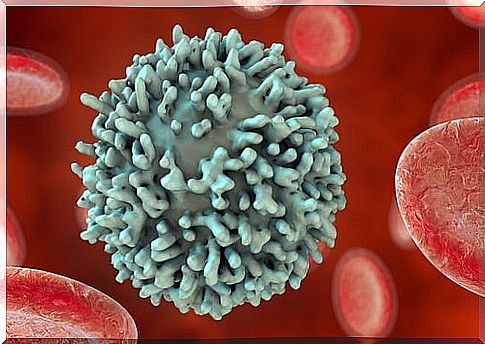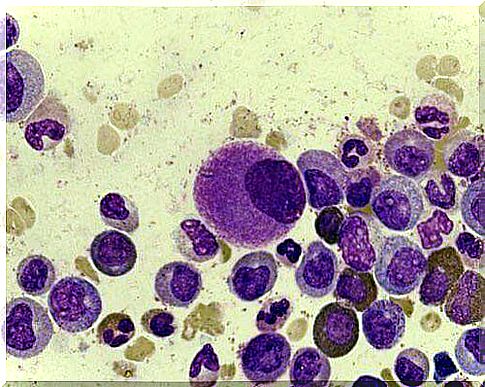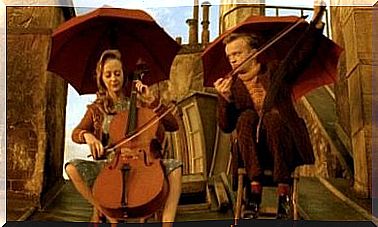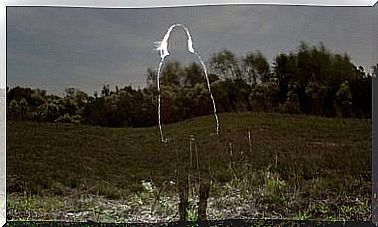Components Of The Immune Response

Our species is under constant threat from a large number of pathogens. Thus, to defend itself, the body gives the immune response that allows the strength of this system. In this way, the task of the immune system is to guarantee the integrity of the body. In addition, it is also responsible for identifying cell degeneration and preventing the development of cancer.
Although it is not easy to explain, the different components of the immune system are organized to protect us against any type of attack from the outside. The problem is that there are certain agents that can compromise or overcome the defenses of this system.
Structural components of the immune response
The structural components of the immune response are divided into two types: primary and secondary. The former produce and differentiate lymphocytes, while the latter capture and process antigens.

Primary structural components
The scam
The thymus is located in two lobes behind the breastbone. Thus, it is an organ that is sensitive to glucocorticoids and its function is to educate the T lymphocytes (make them mature).
Bone marrow
It is a type of tissue that is found inside the long bones, sternum, ribs, vertebrae, skull bones, pelvis and also in the shoulder girdle. It is made up of islets of hematopoietic cells. Thus, this organ is responsible for the differentiation of immune cells, especially B lymphocytes.
Secondary structural components
Spleen
The spleen is an organ that is part of the lymphatic system. It is located in the upper left part of the abdomen and is responsible for:
- Filter the bloodstream.
- Remove aged erythrocrites.
- Capture antigens from the blood.
Lymph nodes
Lymph nodes (or lymph nodes) are organs of the immune system, shaped like small circular balls, distributed throughout the body and linked by lymphatic vessels. They are responsible for filtering foreign particles. Thus, they are of great importance in the proper functioning of the immune system.
The tonsils
These are two organs that occupy the transition of the nasal and oral cavities. Its growth depends on age and is maximum in childhood, decreasing later.
When they get an infection, they get bigger.
Peyer’s patches
They are located in the intestinal wall. Thus, they are clusters of lymphatic tissue that internally line the walls of the small intestine, which are sensitized cells specialized in identifying food-associated antigens.
Non-lymphatic organs
Apart from those already mentioned, other non-lymphatic components, antibodies or immunoglobulins, are also part of the structural components of the immune response. These are found in:
- Secretions of the gastrointestinal and respiratory tracts.
- In the salivary glands.
- Tear ducts
- The mammary glands.
- The mucous membranes.
Cellular components of the immune response
The cellular components of the immune response are 54% plasma. Plasma is the part of the blood that is acellular: it is obtained by leaving the blood devoid of cells such as red blood cells and white blood cells. In addition, there are the plasma cells that occupy 46% of the immune response. These are erythrocytes and leukocytes.
Within the leukocytes we can find:
- Granulocytes. Which are classified into:
- Neutrophils: They act on inflammation. They are more common in human blood.
- Eosinophils: They act against parasites.
- Basophils: They are activated against allergies.
- Monocytes or macrophages.
- Lymphocytes. Likewise, in this group we can distinguish B lymphocytes and T lymphocytes. Furthermore, NK lymphocytes are activated when a nonspecific response occurs.
Lymphocytes
B lymphocytes and T lymphocytes mediate the specific immune response. Meanwhile, NK ( Natural Killer ) lymphocytes are activated with the nonspecific response. Here we tell you what each type deals with:
T lymphocytes
The precursors of T lymphocytes are formed in the bone marrow. Later, they emigrate to the scam and there they are “educated”. Thus, they are divided into several types:
- T helper lymphocytes (collaborators). They are those that initiate the immune response. In addition, they increase the phagocytic effectiveness of macrophages. They are also responsible for the proliferation and differentiation of T and B lymphocytes.
- Cytotoxic T lymphocytes. They are responsible for destroying virus-infected and tumor cells.
- Suppressor T lymphocytes. They end with the immune R.

B lymphocytes
The function of this type of lymphocyte is to produce antibodies (immunoglobulins). Immunoglobulins are glycoproteins that differ in their structure and function into IgM, IgD, IgG, IgA and IgE. Thus, they have the following functions:
- IgM. They are responsible for the primary immune response.
- IgD. They are found on the surface of B cells.
- IgG. Secondary immune response. They are able to cross the placenta.
- IgA. They occur in mucous membranes and saliva. They can also be seen in breast milk.
- IgE. They are activated by allergic reactions.
The role of immunoglobulins focuses on:
- Avoid binding of antigens to cells.
- Coat and agglutinate the antigens.
- Promote phagocytosis by macrophages and neutrophils.
- Initiate inflammation and mobilization of macrophages.
- In addition, they collaborate with the complement system that destroys the antigen (holes in the cell wall).
Thus, we have been able to observe that the immune response is complex. Depending on the identified threat, some cells or others are initiated, and some parts or others of the immune system are activated. This is how the immune system protects us against the different antigens that invade us daily.









